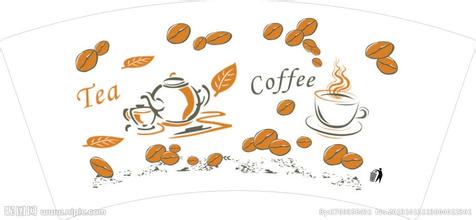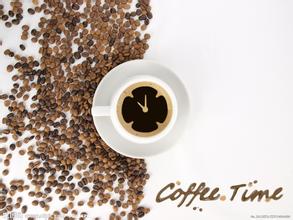Description of Flavor of Coffee beans treated with Solar Water and Honey introduction to Grinding scale of varieties
Flavor Description of Sun-washed Honey Treated Coffee Beans Taste Variety Grinding Scale Introduction
The honey treatment process is vulnerable to pollution and mold damage, requiring close supervision throughout the process, continuous stirring, and accelerated drying to avoid bad fermentation flavor. Its advantage is that it can best preserve the original sweet flavor of coffee ripe fruit, so that coffee presents a light brown sugar flavor and stone fruit sweet, while the berry flavor also supports the red wine base aroma, considered a very elegant product. Honey-treated coffee beans are popular, largely due to its sweet and thick characteristics, which are very suitable for Espresso production in cafes. In recent years, coffee beans called "Miel Process" have become more and more popular, and have also become the preferred raw material of international coffee contestants. Honey-treated coffee beans are a kind of treatment method that is between the sun method and the water washing method. It keeps the coffee clean, although the brightness drops, but adds sweetness and caramel flavor. Honey treated beans have a distinct sticky appearance. However, honey treatment is very dependent on the local climate, the weather must be dry and sufficient sunshine, otherwise it is not suitable for honey treatment. The so-called miel process (Spanish for Miel Process) is said to mean the process of making raw beans with mucous membranes that are sun-dried. After coffee beans have been stripped of their outer pulp, they have a sticky, gelatinous layer. Honey processing, known as Honey Process or Miel Process, is used in coffee gardens in Costa Rica, Panama and Taiwan. The traditional washing method is to wash it with clean water, but because of the water resource limitation of some high-altitude producing areas, this direct drying method has appeared.
Honey is used in almost all regions of Costa Rica. This method is also widely used throughout Central America. Because the surface of coffee beans is extremely sticky and high in sugar, it is usually called "honey." During the honey treatment process, coffee leaves some or all of its "honey" when it dries. The coffee fruit is picked, graded and peeled before being dried on a drying bed.
Due to the short drying time of the mucosa, coffee beans are hardly fermented during the drying process. Coffee beans processed with this method have slightly higher acidity than those processed with natural washing, but much lower acidity than those processed with water washing and natural sun.
Some Costa Rican growers grade honey-treated green coffee beans according to the color of the coffee. There are three levels: yellow, red and black. The change in color results from the length of time the coffee is exposed to light during drying.
Yellow honey treatment of green coffee beans the longest light duration. Longer light means hotter, so the coffee dries within a week. In general, coffee drying time depends on local climate, temperature and humidity conditions. The drying time of red honey-treated green coffee beans is 2-3 weeks, usually due to weather or placed in a dark place. If the weather is fine, growers block some sunlight to reduce the amount of light. Black honey-treated green coffee beans dry longest in the dark, and the shorter the illumination time. The drying time of this coffee is at least 2 weeks. Black honey green coffee beans processing process is the most complex, the highest labor costs, and therefore the most expensive.

Important Notice :
前街咖啡 FrontStreet Coffee has moved to new addredd:
FrontStreet Coffee Address: 315,Donghua East Road,GuangZhou
Tel:020 38364473
- Prev

Introduction to the graphic video tutorial of coffee drawing and frothing skills
The video tutorial of coffee drawing and frothing skills introduces the position of the nozzle when it is stable. Although you can see it at a glance now, it is impossible to see it so clearly in practice, so you need to practice and listen to the sound. And the temperature of the flower jar to determine the time to stop air intake, that is, the time to pull the vat up. Summing up the quality of the foam can be said to directly determine the success of the flower.
- Next

[pull flower] the method of drawing tulip coffee the technique of hand temperature measurement in milking bubble
[pull flower] Tulip coffee pull method milking bubble hand temperature measurement technique now the world coffee pull flower has developed to a very high level, but also encountered a lot of bottlenecks. Directly into the formation of the method, most of them use the basic heart shape and leaf shape to make changes, it is difficult to jump out of these basic patterns, this situation is due to lack of contact, control skills are not hot. And there is no.
Related
- What is the meaning of lactic acid fermentation with coffee bean treatment?
- How to judge the state of foam by sound?
- How does the latte pull out the unicorn pattern? Come to get for a little trick to improve the flower pull!
- Will flower pulling affect the taste of the latte?
- Do you know the history of coffee?
- The difference between honey treatment and sun washing what is raisin honey treatment?
- What kind of milk can a novice use to make coffee foam to keep the foam longer? The correct method and skills of milking tutorial sharing
- Why do washed coffee beans taste sour? Flavor characteristics of washed Coffee
- Introduction to the skill of how to practice the size and height of water injection around the circle of hand-brewed coffee
- How do beginners practice coffee flower drawing from scratch?

